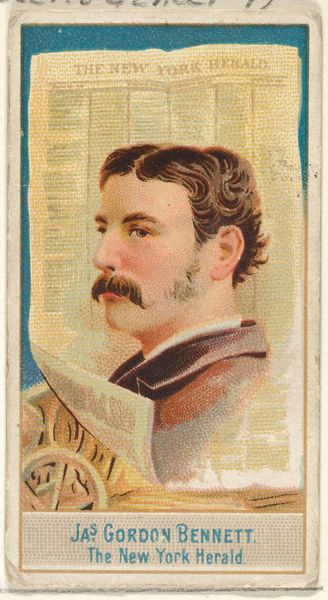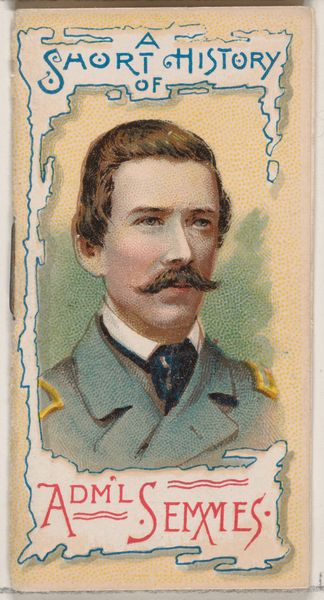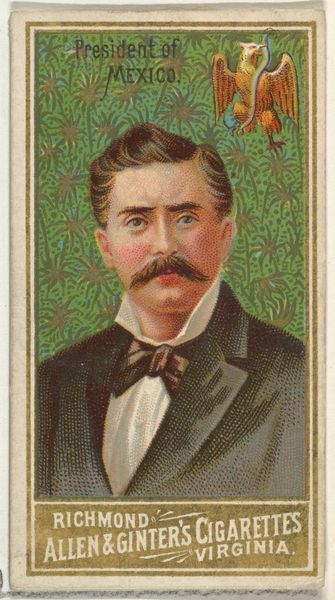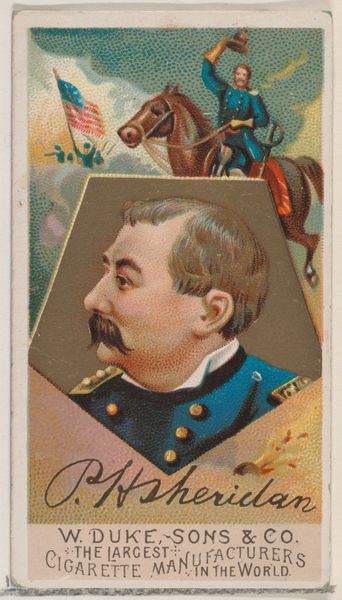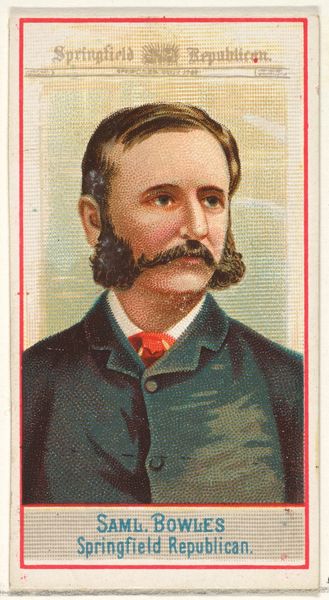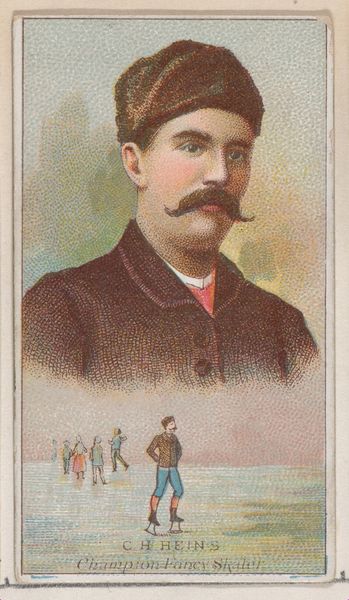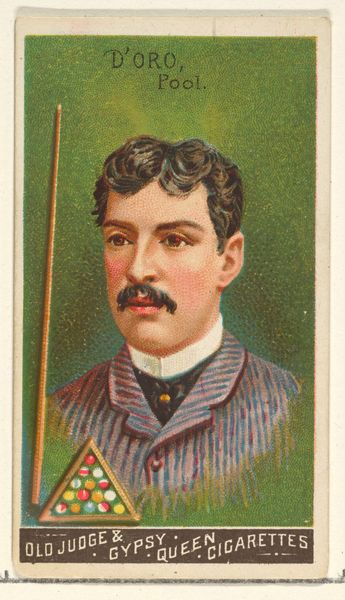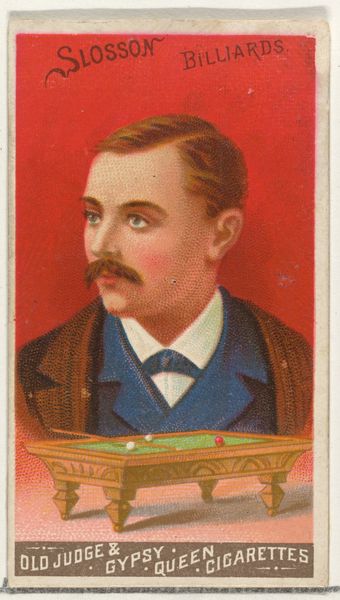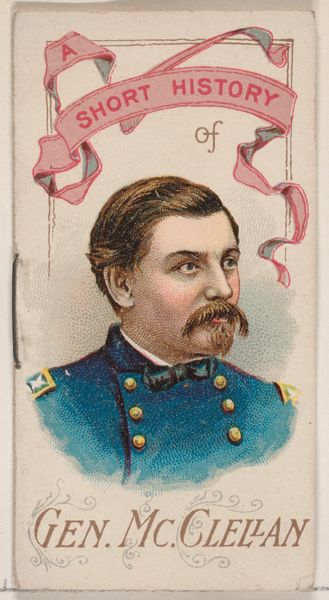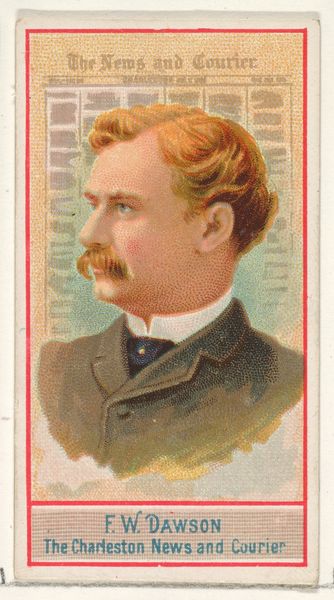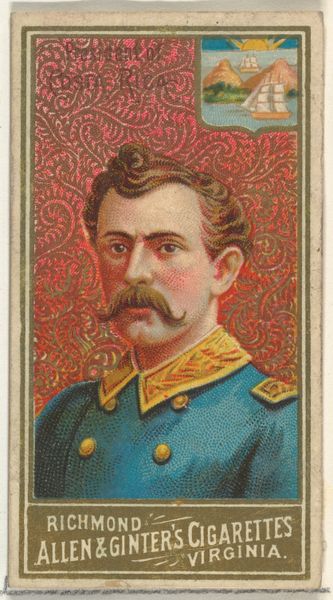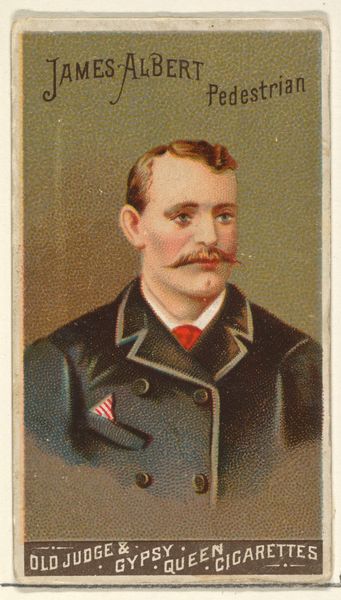
Pierre Gustave Toutant Beauregard, from the Great Generals series (N15) for Allen & Ginter Cigarettes Brands 1888
0:00
0:00
drawing, lithograph, print
#
portrait
#
drawing
#
lithograph
# print
#
figuration
#
men
#
portrait drawing
#
genre-painting
#
history-painting
#
facial portrait
#
portrait art
Dimensions: Sheet: 2 3/4 x 1 1/2 in. (7 x 3.8 cm)
Copyright: Public Domain
Editor: Here we have "Pierre Gustave Toutant Beauregard" from the Great Generals series, printed in 1888 by Allen & Ginter as a lithograph for their cigarette brand. It has a strange nostalgic feel, yet the romanticized portrayal of war is unsettling. What's your take on this? Curator: It's interesting you say that. These trade cards offer a powerful glimpse into how history was being marketed and consumed in the late 19th century. They circulated images of Confederate generals like Beauregard right after Reconstruction. How do you think this normalizes and sanitizes a divisive figure for popular consumption? Editor: I never thought about the Reconstruction context. Seeing him on a cigarette card almost trivializes the complexities and pain of that era. What does it say about the values being promoted through this kind of imagery? Curator: Exactly. By placing Beauregard in a series called "Great Generals," it legitimizes the Confederacy's cause, subtly reinforcing racial hierarchies at a time when those hierarchies were being legally challenged, but violently maintained, especially in the South. It becomes part of a broader cultural project. Doesn't this miniature heroic representation of war bother you? Editor: Definitely. It glosses over the brutal realities of slavery and the Civil War to uphold a selective narrative. How might we contextualize such images today, especially when considering issues of representation and historical memory? Curator: We must unpack how these seemingly innocuous objects perpetuate harmful narratives. By engaging in critical dialogues that interrogate power dynamics and question the legacy of figures like Beauregard, we can understand our present differently. Editor: I see. By questioning the underlying ideology, we can have a healthier understanding of the art itself. I'll definitely look at trade cards differently. Curator: Indeed. Viewing this card opens so many historical perspectives, beyond the pure aesthetic appreciation.
Comments
No comments
Be the first to comment and join the conversation on the ultimate creative platform.

